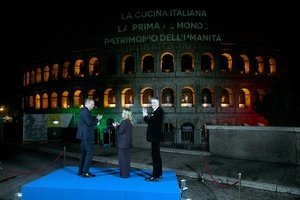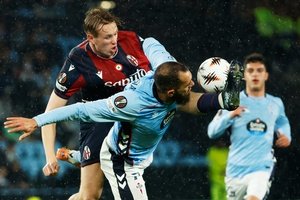Before giving herself “permission” to write her own book, Porcella spent years designing, editing and often rewriting the work of others.
There’s no publishing field in which Porcella, a Cagliari native by birth and a Florentine by adoption (where she graduated in philosophy), hasn’t worked.
She’s the former editor-in-chief for scholastic and multimedia projects at Giunti and former editor of the Fatatrac and Motta Junior brands. She’s also worked as a freelance editor and author for many other publishers from giants Rizzoli and Mondadori, to independent labels such as Sinnos, Kalandraka, Carthusia, LibriVolanti, Edt and Telos.
Between 2011 and 2020 Porcella also gained experience as a bookseller, and together with two partners founded Cuccumeo, a specialised children’s bookstore in Florence that has won the award of ‘Best Bookstore in Italy’ several times.
If that all wasn’t enough, Porcella also trains teachers and librarians, holds workshops all over Italy and teaches Editorial Design at The Sign Academy of Graphic Design and Illustration in Florence. Before all that, she taught Children’s Literature at the University of Cagliari for three years.
“I started writing poetry when I was 14,” Porcella recalled. “I wrote a lot, but everything stayed locked in a drawer, or rather many drawers. I always knew that was what I wanted to do.
“The people around me understood that, too.”
“[As a child] I would look at the car behind me and make up a story about the person who was driving,” she revealed.
“When the car passed us, I had to find a quick ending for that character and move on to a new story. This need for storytelling has accompanied me all my life.”
It was in high school where Porcella was first exposed to poetry, thanks to her humanities teacher. “He made us study Porta and Belli, making me discover the power of dialectics. Also Brecht, translated by Franco Fortini, it was like lightning. [We also studied] the women poets, with Sylvia Plath and Ann Sexton leading the way.”
That first poem by 14-year-old Teresa returns, along with others, in the book Before and After (Bacchilega, with illustrations by Giorgia Atzeni).
“A collection that came out during the pandemic, whose common thread is expectations and what remains of the important moments, those that [define] in our lives.”
An important example, for Porcella, was her mother.
“I am the youngest of seven siblings,” she shared. “My mother, when I was a child, went back to school and enrolled in college. We did homework together.”
It was a fundamental experience that taught Porcella that at any time in life, one can start new paths.
Today, Porcella has more than 30 books published, in verse and prose, for different readerships ranging from 0 to 13 years old.
Many of them are award-winning and sold in Spain, Mexico, Argentina, the United States, China, Brazil, Turkey, Jordan, Serbia, Romania - and that’s not including the books she edited.
Prominent among the latter is 147, Monster Who Speaks (Telos editions), dedicated to the fantastic beings of the folk legends of the Italian regions.
“The idea was to make Italy known through traditional stories featuring monsters, spirits and other creatures,” Porcella explained.
“Some of these beings are common to all the Regions, perhaps with different names. Others are linked to individual territories.”
And in a sort of literary cameo, she kept the volume dedicated to Sardinia for herself to write.
“I wanted for each book a writer and an illustrator originally from that area who were able to cast the magical characters in present-day reality.”
In addition, each book has a digital extension that allows readers to listen to one of the stories from the voice of its author. This is also an interesting format for Italians abroad, for whom the link with roots and traditions is felt more regionally than nationally, as the community associations themselves testify.
At a time when people are reading less and less and young people are addicted to their cell phones, is writing children’s books worthwhile?
“Children read more than adults, at least in Italy,” Porcella replied.
“And teenagers spend the same amount of time on their cell phones as most of their parents.”
The question is how to interest them.
“Many video games are structured as narratives,” Porcella went on. “And so, you can bring them closer to literature by showing that many of their favourite games are derived from other narratives.
“After all, the Divine Comedy itself is like a video game that proceeds in levels. The trick is not to insist on the opposition between media, the book versus the video game, but on continuity.”
Porcella says it’s important to make them protagonists by listening to their opinions and tastes.
“They can write book reviews via rap, for example,” she said.
“This involves reading, reflecting, analysing, synthesizing and writing according to a genre that has rules to follow.”
It’s a perspective that encourages teachers to take their students off the beaten path if they’re to discover anything worthwhile.












